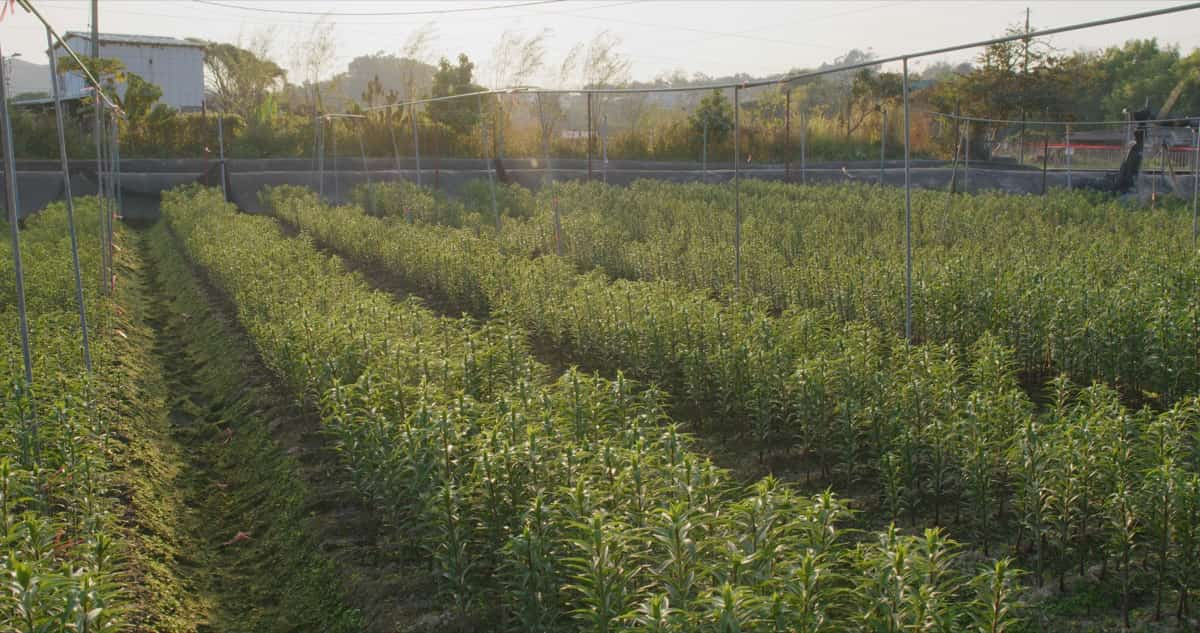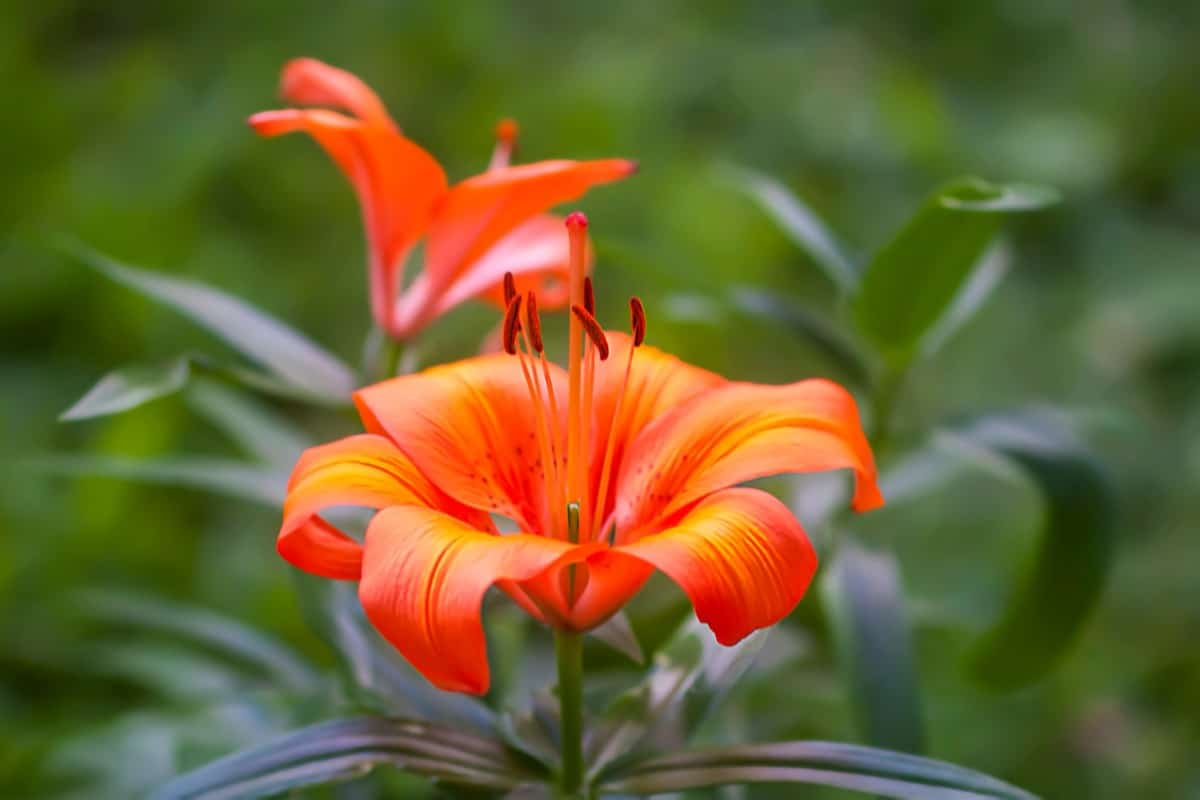Maintaining the beauty of these fragile blooms while protecting the environment depends on managing lily pests using natural and organic remedies. In this tutorial, we’ll look at natural ways to eliminate common lily pests so you can keep your garden healthy without using dangerous pesticides.

How to Control Lily Pests Naturally
What is Lily? What are its Major Characteristics?
Beautiful flowering plants called lilies are prized for their wonderful scent and eye-catching looks. These plants, which are members of the Lilium genus, are colored white, yellow, orange, pink, and red. Lilies are well-known for their trumpet-shaped blooms, which include six tepals or pieces that resemble petals and frequently have noticeable stamens. Typically, they emerge from bulbs and, depending on the type, can grow to varying heights.
Lilies are frequently utilized in gardens and floral arrangements because of their elegance. They like sunny areas and do well in well-drained soil. Because of their vivid blooms, many cultures view them as symbols of love, rebirth, and purity.
Understanding Lily Pests: Identifying Common Pests and Their Damage
- Aphids: Tiny, soft-bodied insects that suck sap from lilies, causing leaves to curl and turn yellow.
- Red Lily Beetles: Distinctive bright red insects with blackheads that chew on lily foliage, leaving holes and defoliating plants.
- Snails/Slugs: These slimy creatures leave behind irregularly shaped holes in leaves and flowers.
- Spider Mites: These tiny arachnids suck sap from lily leaves, causing stippling (tiny yellow or white spots) and fine webbing on plants.
- Thrips: Tiny, slender insects that feed on lily buds and flowers, leaving them discolored, distorted, or with silvery streaks.
Prevention is Key: Implementing Effective Strategies to Control Lily Pests
- Plant Selection: Start with healthy lily bulbs from reputable sources. Strong, disease-resistant varieties are less prone to infestations.
- Proper Spacing: Avoid overcrowding lilies; provide ample space for air circulation to deter pests.
- Regular Inspection: Check your lilies often for signs of pests, like aphids or lily beetles.
- Natural Predators: Encourage beneficial insects like ladybugs to help control pests.
- Neem Oil: Apply neem oil to deter and smother pests.
- Cleanliness: Remove dead leaves and debris, as they can harbor pests.
Natural Remedies for Lily Pest Control: Harnessing the Power of Companion Planting
Eco-friendly and successful natural solutions are available for controlling lily pests. Companion planting is a clever strategy that includes carefully arranging specific plants close to your lilies to keep pests away. For example, the smells of marigolds and lavender deter typical lily pests like spider mites and aphids.
Garlic and chives planted close can also help deter unwelcome insects. Furthermore, consider putting dill or fennel close to your lilies to draw in beneficial insects like ladybugs and lacewings. Hazardous pests are naturally preyed upon by these helpful insects. Using these easy companion planting practices, you may safeguard your lilies without using chemicals.
Organic Treatments for Lily Pests: Utilizing Safe and Environmentally Friendly Solutions
- Neem Oil: it is a natural insect repellent. Mix it with water and spray it on your lilies to deter pests.
- Companion Planting: Plant garlic, chives, or marigolds near your lilies. These plants naturally deter pests.
- Hand-Picking: Keep an eye on your lilies and remove pests like aphids and snails by hand when you spot them.
- Beneficial Insects: Attract ladybugs and lacewings to your garden as they eat lily pests.
- Soapy Water: Water and mild soap can wash off pests.
Creating a Healthy Garden Ecosystem: Attracting Beneficial Insects to Combat Lily Pests
- Choose the Right Plants: Plant various flowers, herbs, and shrubs to provide food and shelter for beneficial insects.
- Avoid Pesticides: Minimize or eliminate chemical pesticides, as they harm both harmful and beneficial insects.
- Beneficial Plants: Include marigolds, dill, and fennel, which attract ladybugs, lacewings, and parasitic wasps.
- Water and Mulch: Maintain proper watering and mulching to create a welcoming environment for insects.
- Patience: It may take time for the beneficial insects to establish, but they’ll help control lily pests naturally, reducing the dependence on harmful chemicals.
In case you missed it: Common Lily Plant Damaging Diseases: Symptoms, Treatment, Prevention, and Management

Homemade Pest Repellents: DIY Recipes to Deter Lily Pests Naturally
To keep pests away from your lilies without using chemical sprays, it’s simple to create DIY bug repellents. Mix 4 ml of dish soap with one gallon of water to repel aphids and other soft-bodied insects. To suffocate and discourage bugs, mist your lilies with this solution. Moreover, you can grow companion plants like marigolds, whose aroma deters many common lily pests. In addition, you can repel pests by spraying the leaves with a mixture of crushed garlic and water. Naturally, maintain healthy, pest-free plants by routinely checking your lilies for early symptoms of infection and taking immediate action when necessary.
Physical Barriers and Traps: Physical Methods to Keep Lily Pests at Bay
- Row Covers: Covering your lilies with fine mesh or row covers prevents pests like aphids and beetles from reaching the plants.
- Sticky Traps: Place yellow sticky traps near your lilies to attract and catch flying insects like whiteflies and thrips.
- Copper Barriers: Surround the lilies with copper tape or wire. Copper’s mild electric charge repels slugs and snails.
- Hand-Picking: Regularly inspect your lilies and remove pests like caterpillars and beetles by hand.
- Mulch: Apply mulch around your lilies to discourage weed growth, which can harbor pests.
Soil Management Techniques: Enhancing Soil Health to Reduce Lily Pest Infestations
- Compost: Add organic matter like compost to your soil. It improves soil structure, retains moisture, and provides essential nutrients to lilies.
- Crop Rotation: Change where you plant your lilies each year to confuse pests and reduce their numbers.
- Mulching: Apply a layer of mulch to keep the soil cool and prevent weed growth, which can harbor pests.
- Balanced pH: Test your soil’s pH and adjust if necessary to create an ideal environment for lilies.
- Beneficial Insects: Attract helpful insects like ladybugs and parasitic wasps by planting companion plants nearby.
- Regular Inspection: Check lilies for signs of pests and remove affected parts promptly.
Proper Watering and Fertilization Practices: Maintaining Vigorous Lily to Resist Pests
Maintaining healthy lilies naturally resistant to pests requires proper fertilization and watering. Giving lilies less frequent but deeper waterings promotes deep root growth and insect deterrents. Make sure the soil dries properly to avoid soggy roots. Use a balanced, slow-releasing organic fertilizer during the growing season for best results.
Steer clear of overfertilizing as this may draw pests. Depending on the variety, lilies may require various nutrients, so pay attention to the instructions relevant to your type. Pests have a harder time getting into healthy lilies, and these measures build a strong defense against infestations, which lowers the need for pesticides and encourages a flourishing lily garden.
Integrated Pest Management (IPM) for Lily: A Holistic Approach to Pest Control
Integrated Pest Management (IPM) is a clever and environmentally responsible method of maintaining the health of these lovely blooms. IPM employs a comprehensive strategy as opposed to depending just on insecticides. First, the life cycles of the pests are identified. Then, to control them, we distribute helpful insects or employ natural predators like ladybugs.
Pest resistance in lilies is further enhanced by maintaining healthy soil and appropriate irrigation. We can even erect physical barriers like nets to keep animals at bay. To identify problems early, regular monitoring is essential. By combining these strategies, we can lessen environmental harm while protecting our lilies. Both wildlife and your garden will benefit from it!
In case you missed it: 10 Common Lily Plant Damaging Pests: Symptoms, Treatment, Prevention, and Management

Lily Pest Control with Natural and Organic Treatment
| Pest | Natural & Organic Treatment |
| Aphids | Spray lilies with a mixture of water and mild dish soap. |
| Lily Beetles | Handpick beetles off the plants and drop them into soapy water. |
| Slugs & Snails | Create barriers using crushed eggshells or diatomaceous earth. |
| Spider Mites | Spray lilies with a mix of water and neem oil. |
| Lily Leafhoppers | Introduce beneficial insects like ladybugs to control them. |
| Fungus & Mildew | Apply a solution of baking soda and water as a preventive spray. |
| Lily Borers | Remove affected areas and bury them to prevent further infestation. |
Conclusion
Controlling lily pests naturally and organically is vital for a healthy garden. Identify common pests like aphids and beetles and prevent infestations through companion planting and attracting beneficial insects. Use homemade repellents, physical barriers, and soil management for effective pest management. Integrated Pest Management (IPM) offers a holistic approach, minimizing environmental harm while protecting your beautiful lilies.
- Deworming Schedule for Dogs/Puppies: A Beginners Guide
- How to Prevent and Control Parasites in Goats
- Beneficial Insects in Pest Management
- Natural Solutions for Pest Control in Flower Gardens
- Types of Fungicides Used in Agriculture
- Common Issues in the Fruit Development Stage of Pomegranate Farming
- Fruit Development Issues in Papaya: Easy Solutions and Treatment
- Soil-Borne Diseases and How to Protect Your Plants
- Practices to Prevent Disease Spread in the Garden